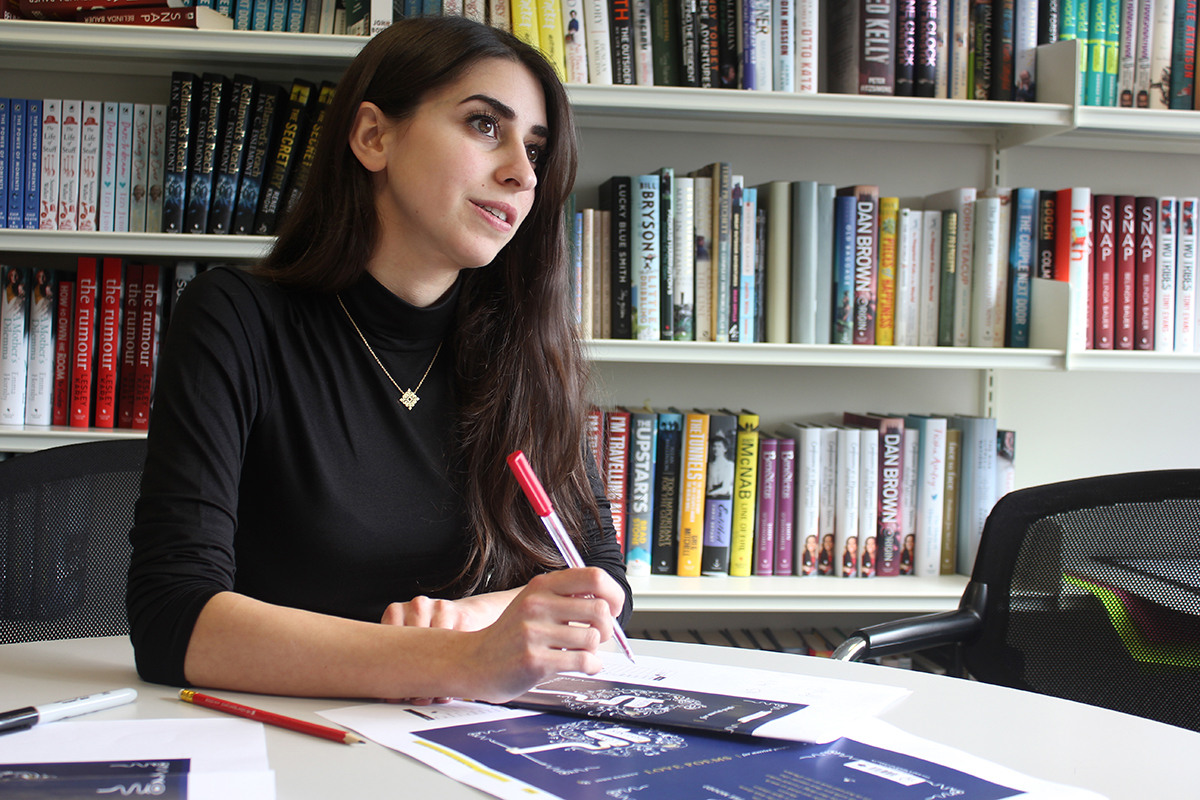- Home
- About
- Company articles
- How do you design a book cover?
How do you design a book cover?

Publishing is a wonderful industry to work in. As a book designer, you are surrounded by passionate people who truly care about, and believe in the projects they are working on. You get to see the creation of a book from start to finish. Your day can take you from a photoshoot, to staring at two Pantones for three hours to find that perfect shade of flamingo pink (there are many shades of flamingo pink).
It’s a designer’s job to create a bridge between the story and the readers. Like a moth to a well-designed flame, we are tasked to grab people’s attention long enough for them to pick up a book and entice them into reading it. So how do we get from ideas on a page to finished book on a shelf?
Every month the art department are given briefs for all upcoming titles which are then distributed among the team by the Art Director. At this point we must create several visuals for the books we have been assigned, which are then presented during the cover meeting in front of the editorial team, heads of departments and Managing Director. After several iterations and edits, once a design has been approved by the meeting and sent to the author, we have to put together the rest of the cover: including the spine, back cover and endpapers.
But let's get started on how I work with a brief from the very beginning...
Research, research, research
So, we've got our brief. What's first? This part truly depends on the designer and how they prefer to work; some need to read the entire manuscript before starting, others need to sketch hundreds of ideas before developing them more on their computers and some jump right into it from the information on the brief. Personally, I like to dedicate the first couple of days to research. For me, this means needing to read at least part of the manuscript to pick up on small elements I can incorporate into the cover. The wider process can vary from book to book, but I always start this way.
Start sketching
I then move on to roughly sketching my ideas. I value when a cover has a strong concept that elevates the design, so the ground work from my days of research will influence this. Some designers prefer to sketch straight onto the computer with a graphics tablet, and others are more traditional with simple pencil and paper! This section of the process is really important to get any ideas in your head onto a page and see what works and what doesn't. These sketches get more and more refined before chatting with the editor.
Who will read this book?
There are a thousand ways to make a beautiful cover, but fewer ways to make it impactful. No matter your creative process, book designers have to remain mindful of who the book is targeted towards. You can spend days creating countless gorgeous covers, but if none of them grab your audience’s attention then you’ve unfortunately missed the mark. Keeping this at the forefront of your mind is so important.
Keeping your finger on the pulse
For us to stay connected with different market segments our Art Director, Richard Ogle, organises monthly department trips to art galleries and bookstores around London. Each trip revolves around a theme or genre where walk around and pick covers we believe are communicating the most successfully. This helps us see what is currently on-trend in the industry, see different ways other designers tackled and interpreted their own briefs and, most importantly, gets us out of the office and not turn us into zombies in front of our monitors and tablets. Looking for what is working in the market currently reminds us to keep an open mind as to how we can push that look into the next best – but surprising – cover.
Communication with the Editor
The editors play a huge role when it comes to the realisation of a cover. Not only are they the ones who fight to acquire the works of our various authors, but they also act as our compasses. They keep us on track and nudge us back into the right direction if we stray too far off course. They spend so long going over the manuscripts that most know the book as well as the authors, and so know exactly who the audience are. Together we go over what their vision is for the cover (whether it needs to be illustrative, typographic, photographic and so on), and are then left to our own devices to come up with various options. These visual options are then put in the weekly cover meeting, where it will be determined which will be the final cover. The last stage is to put together the rest of the cover, and then it's off to the production team to finish completing the book.
It's wonderful seeing your final design on a shelf in a book shop, and then it's onto the next book - as I can be working on around 7 covers at the same time! Now you've learnt the process of a book designer, why not put it into practice by entering the 2020 Student Design Award?